


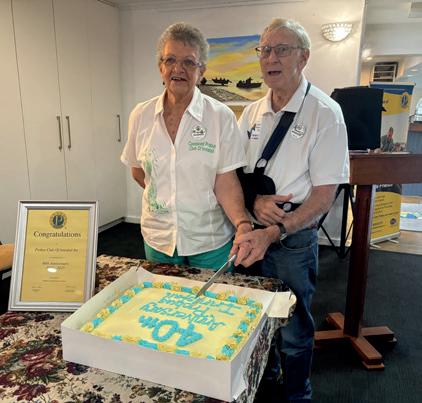





















The phrase "by your fruits" comes from Matthew 7:16-20, where Jesus teaches that you can recognise people by their actions and the outcomes of those actions, much like you would recognise a tree by its fruit.
Essentially, it means that a person's true character is revealed through their behaviour and the results of their choices.
What we do and how we behave can hinder personal growth and the ability to produce good "fruit" in life.
For example, we can all pray together and say and do all the right things when people are watching, but we can have the wrong heart attitude.
Another example is saying yes and amen in a church service but still having unforgiveness in your heart toward someone.
When people suppress their true feelings, beliefs, and desires instead of giving them to God, this can lead to a lack of authenticity, which is essential for growth.
If you constantly Praise, pray, and do all the right things physically but fail to deal with the inner issues of the heart (Sin), you will fail to produce the right fruit. Don't let hypocrisy grow.

Rotten fruit is produced when:
- We blame others for our emotional state. - Feel angry when you see someone you 'forgave.'
- unrepentant sin, secret sin & so on
At times, we might avoid brutal Truths or necessary changes in our lives,
(Yes, the truth can hurt; Jesus offended the Pharisees)
This can create a barrier to developing a strong character and
making choices that align with 'your values' instead of God's word. Instead of nurturing the "fruit" of your inner self, you might cultivate a facade that doesn't allow for real growth or fulfilment.
Anyone can say they are a Christian, but can we call ourselves 'Disciples?' Can we be like the disciples walking by God's word, repenting of sin, keeping our hearts pure and producing 'good fruit?'
Mark 9:47 NIV
[47] And if your eye causes you to stumble, pluck it out. It is better for you to enter the kingdom of God with one eye than to have two eyes and be thrown into hell,
Matthew 5:28 NIV
[28] But I tell you that anyone who looks at a woman lustfully has already committed adultery with her in his heart.
While referring to a physical discipline, these verses speak of a spiritual one, our body, spirit & soul. The lack of submission in our walk with God leads to the lack of fruit. Jesus doesn't mean to remove your eye physically, but rather:
'What can we do to stop putting/allowing ourselves in these situations that could potentially throw us into hell.'
As described in Galatians 5:22-23, the fruit of the spirit includes love, joy, peace, patience, kindness, goodness, faithfulness, gentleness, and self-control. Unforgiveness slows the production of these fruits by creating a negative and toxic environment within our hearts. Have you heard the saying 'a hard heart' before? I wonder if this is where it originates.
In summary, Unforgiveness is like a weed that chokes out the good seeds of love, joy and peace, allowing the demonic to participate in our lives. When we choose to forgive, we are clearing the ground for the fruit of the spirit to grow and flourish in our lives.
It's easy to change the outward appearance,
But the Lord sees and knows the heart.


Website: wettropictimes.com.au
Email: info@ wettropictimes.com.au


IGGULDENS 75TH BIRTHDAY SALE OFF, AT IGGsToo - Kids Shop FRIDAY 21ST FEBRUARY 5PM.

WATCH & LISTEN FOR OUR 75 THEMED PRIZES SHOPPING IGGULDENS IGGULDENS CLOTHING, FOOTWEAR, HEADWEAR, WORKWEAR TRAVEL GOODS & GIFTLINES.
IGGULDENS DO ALL UNIFORM ASPECTS, AT THE BEST PRICING EMBELLISHMENTS including SUBLIMATION, TRANSFER PRINTS, EMBROIDERY ETC. EXPERIENCE our 75yrs EXPERIENCE
TRANSFER PRINTS, EMBROIDERY ETC. EXPERIENCE our 75yrs EXPERIENCE

THE Feast of the Senses returns in March for its 22nd annual festival. The four-day event kicks off on Thursday, March 27, with some fun and fruity trivia at the Innisfail RSL Club with the Gone Troppo Trivia Night, followed by the Northern and Southern food trails during the day on Friday and Saturday, and delicious tropical food events at the RSL and Brothers Leagues Club Bistro in the evenings.
Tickets for the food trails are now on sale, and places are filling fast. There has been a notable increase in out-of-town, southern, and international visitors.
"Our food trails are eagerly awaited every year," said President and volunteer Festival Manager Rosi Jensen. "We have some terrific venues to visit on both food trails. It's a great day out and a unique experience of the tropics for locals and visitors alike."
The Innisfail Riverfront and Canecutter Court come alive on Sunday, March 30, with daily music and entertainment and various market stalls, food vans and taste
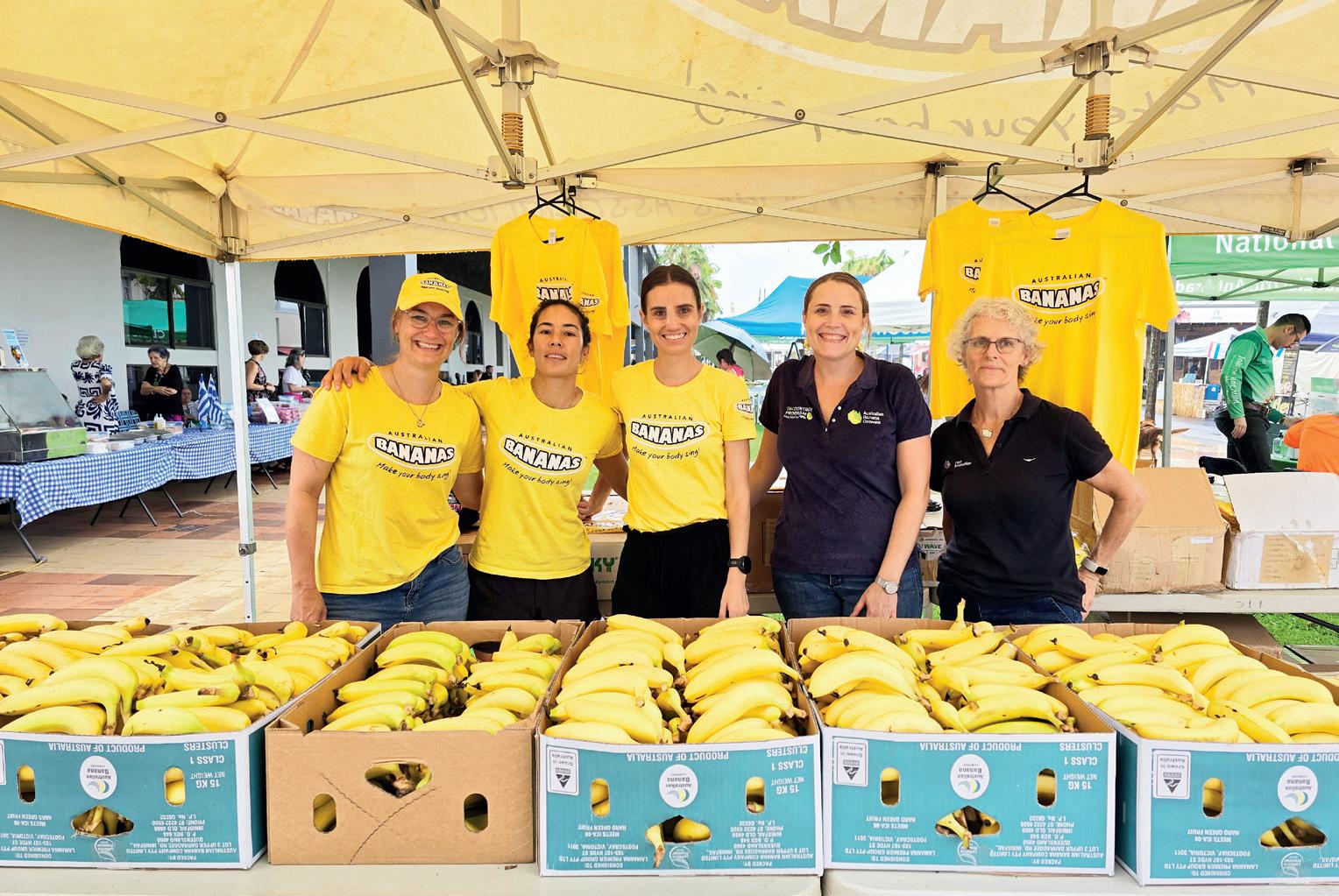


sensations. Don't miss the Cassowary Coast Rare Fruits Association's amazing display and free fruit tastings in their marquee on the river, with the fruit auction later in the day.
Families with children can enjoy the free and ticketed activities in the Feast of Fun Kid Zone all day. At the same time, adults can linger at the cooking stage for recipe ideas, demonstrations and free tastings in Canecutter Court.
Sunday's River Feast, from 9 am to 3 pm, is a great day out for the family and people of all ages. Queensland's premier fruit festival is right on your door-step so don't miss it!
You can check the Feast of the Senses website and Facebook page for all details, book tickets, register to go on the email list to get festival news direct to your inbox, or book your stall to be part of this great event at www.feastofthesenses.com.au












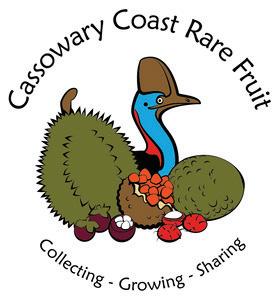




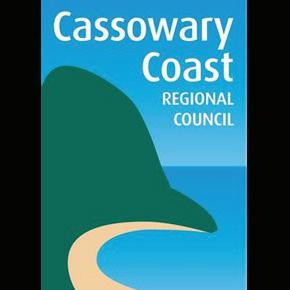
AS our community transitions from disaster to recovery, our teams will continue to work behind the scenes repairing damage and rebuilding our communities.
Council’s Actions to Date
During the disaster response, Council has been actively working to support our community by:
• Undertaking counter-disaster activities to restore Council’s transport and drainage infrastructure.
• Ensuring the continuation of essential services, including water, wastewater, and waste management.
• Reviewing Council’s Financial Hardship Policy and rates due date to support affected residents.
• Conducting kerbside hard waste clean-ups in Cardwell and surrounding areas.
• Assisting the Queensland Recovery Team at community recovery hubs.
• Engaging with local businesses to support economic recovery.
• Opening a temporary transfer station for flood waste disposal.
• Collaborating with the Queensland Reconstruction Authority to assess damage and coordinate emergency repairs.
• Partnering with the state government and suppliers to restore critical supply routes
• Connecting residents with grant opportunities.
• Advocating for our community’s needs at the state and federal levels.
• Providing mosquito repellent and cleaning supplies to the Cardwell community.
Restoring infrastructure takes time and requires detailed assessments, funding approvals, and adherence to safety and quality standards. Over the next three to six months, Council will focus on:
• Conducting a comprehensive assessment of infrastructure and road networks to identify and prioritise necessary repairs.
• Preparing and submitting funding applications to the Queensland Reconstruction Authority to support recovery efforts.
• Conducting repairs to essential public assets.
• Connecting our community with available grant opportunities to assist those impacted by the disaster.
• Conducting of business and industry impact assessments in impacted areas to identify impacts and issues.
• Collaborating with agencies to provide the business community with
support options available and communicate facilitate opportunities to be supported to access.
• Advocate to highlight disaster induced issues being experienced by businesses and Drive the Economic Recovery Sub Group to identify short, medium and long term recovery actions tailored to meet the region’s needs.
• Council will support wildlife rehabilitation activities, establish an environmental recovery group, and secure funding for natural asset recovery efforts.
• Identify and make safe coastal accesses, repair damaged walking tracks/ fire trails, and coordinate the recovery of sunken boats and marine debris to restore the key environmental values of the Region.
We will continue to provide updates on infrastructure repairs and funding developments through our official channels.
Financial Support for Ratepayers Council recognises the financial challenges disasters bring. To assist ratepayers, we have:
• Extended the due date for January–June 2025 rates to Friday, March 14 2025 for all ratepayers
• Maintained the 5% discount on general rates for those who pay in full by the extended due date
• Reviewed and amended our Financial Hardship Policy to better support those most severely impacted
We extend our heartfelt thanks to the volunteers, contractors, and organisations who have stepped up to support our community. We are especially grateful to Red Cross, Tully Support Centre, CCUS, Blenners Transport, Girringun Aboriginal Corporation, Khalsa Aid Innisfail, Lions, QCWA, SES, Rural Fire Service, QPS, QFD, QRA and all individuals who have given their time.

THE National Rural Health Alliance (NRHA) congratulates the Australian Government on the imminent recognition of Rural Generalism as an official General Practice specialty. With one-third of 2025’s cohort of future General Practitioners (GPs) in training for Rural Generalism, this is an important milestone.
“It is exciting that one-third of Australia’s largest-ever cohort of future GPs will train as multiskilled Rural Generalists and the government’s support for the specialty’s imminent recognition,” said NRHA Chief Executive Susi Tegen.
“The NRHA has supported the call for Rural Generalism to be a specialty within the medical workforce recognising the diversity, depth and breadth of the work that clinicians practicing in rural and remote Australia provide to rural communities.
“Rural and remote Australia is crying out for an equitable share of healthcare

investment no matter what the post code is. The recognition of Rural Generalists as a specialty acknowledges the training and scope of a Rural Generalist and the enormous value that they bring to rural Australia,” said Ms Tegen.
While this is an exciting milestone in the Australian healthcare landscape, the NRHA reiterates the urgent need for a National Rural Health Strategy to deliver long-lasting outcomes for rural health care.
“Today’s announcement, while welcome, is just one step to ensure a comprehensive strategy.
“The National Rural Health Strategy we propose under the National Health Reform Agreement would coordinate Commonwealth, State, and Territory investment to better serve rural Australia.
“While promoting the Rural Generalist pathway is vital, the Government must also ensure GPs who choose rural practice are supported with essential infrastructure, housing, childcare, schooling, and other facilities that help them and the health workforce stay. We need a multifaceted approach to truly make a difference.
“With the upcoming elections in mind, we are ready to work with any government to implement a National Rural Health Strategy that ensures sustainable and equitable healthcare access for rural, regional, and remote populations,” said Ms Tegen.
The National Rural Health Alliance (the Alliance) comprises 52 national organisations committed to improving the health and wellbeing of the over 7 million people in rural and remote Australia. Our diverse membership includes representation from health professional organisations, health service providers, health educators, the Aboriginal and Torres Strait Islander health sector and students.


QPS
ON FEB 18, 2025 @ 8:56AM
CORRECTION: Officers from the Tablelands Criminal Investigation Branch (CIB) charged 10 young people with more than 50 offences on Friday, February 14.
Earlier: Officers from the Tablelands Criminal Investigation Branch (CIB) charged 10 young people with 55 offences on Friday, February 14.
Police from the Far North Dog Squad, Mareeba Station, Mareeba Child Protection Investigation Unit (CPIU), POLAIR and Far North Tactical Crime Squad were called following the theft of a Toyota Hilux from an Allara Street property around 5:30am.
It will be alleged a group of four teenagers drove the vehicle dangerously around Mareeba, before abandoning it around 1pm near Granite Creek and fleeing on foot.
All four were located a short distance away.
A 17-year-old Manoora boy was charged with two counts of unlawful use of a motor vehicle, and one count each of dangerous operation of a vehicle, attempted enter dwelling with intent, enter premises and commit indictable offence and breach of bail.
He was refused bail and was due to appear in the Mareeba Childrens Court on February 17.
A 15-year-old Tully girl was charged with one count of unlawful use of a motor vehicle.
She is due to appear in the Mareeba Childrens Court on February 24.
A 16-year-old Mareeba boy was charged with three counts of unlawful use of a motor vehicle, two counts each of enter dwelling and commit and stealing, and one count each of armed robbery, evasions, enter premises and commit indictable offence, and receiving tainted property.
He was refused bail and was due to appear in the Mareeba Magistrates Court on February 17.
A 16-year-old Innisfail Estate boy was charged with three counts of unlawful use of a motor vehicle, two counts of stealing and one count of attempted enter dwelling with intent.
He is due to appear in the Mareeba Magistrates Court on March 3.
In an unrelated matter, six young people handed themselves into police on Friday, February 14, following investigations by Tablelands Detectives into several property offences in Kuranda.
It will be alleged the group was involved in the break and enter of a Therwine
restaurant, a Rob Veivers
February 10.
A 17-year-old Kuranda boy was charged with four counts of enter premises and commit, two counts of attempted enter dwelling with intent, and one count each of unlawful use of a motor vehicle, attempted enter premises with intent, stealing and failure to appear.
He was refused bail and was due to appear in the Cairns Childrens Court on February 17.
A 15-year-old Atherton boy was charged with three counts of enter premises and commit indictable offence and one count of stealing.
He is due to appear in the Mareeba Childrens Court on March 3.
A 16-year-old Kuranda boy was charged with one count each of stealing and attempted enter premises with intent to commit.
A 16-year-old Kuranda boy was charged with one count each of stealing, enter premises and commit indictable offence and wilful damage.
A 17-year-old Hopevale boy was charged with one count each of stealing, enter premises and commit indictable offence and obstruct police officer.
A 16-year-old Mareeba boy was charged with one count each of stealing and enter premises and commit indictable offence.
All four boys are due to appear in the Mareeba Childrens Court on February 24. Country and Cape Crime Group Detective Inspector Jason Chetham said police will continue to target serious property offenders causing harm in the community
“Police are continuing to conduct proactive, high-visibility patrols to deter and disrupt offending in Tablelands communities,” Detective Inspector Chetham said.
“We want residents to be, and feel safe, and will do everything we can to seek justice for victims.
“We are grateful for the support and collaboration of local Kuranda residents in helping resolve this matter and will continue to work with the community to keep them safe.”
If you have information for police, contact Policelink by providing information using the online suspicious activity form 24hrs per day at www. police.qld.gov.au/reporting.
Report crime information anonymously via Crime Stoppers. Call 1800 333 000 or report online at www.crimestoppersqld.com.au.





Serves: 4
SARI RUSSO
Equity is often portrayed as giving people what they need to reach the same outcome, while equality is about treating everyone the same regardless of their starting point. In many cases, equity is seen as a means to correct systemic disadvantages and create fairness. However, problems arise when equity is misapplied or used to justify unequal treatment in a way that excludes or disadvantages certain groups.
Shifting the Goalposts – If equity is defined in a way that continually adjusts outcomes for certain groups while neglecting others, it can lead to a perception of unfairness. For example, if resources are redistributed based on past injustices but new disadvantaged groups emerge and are ignored, it becomes selective fairness rather than universal fairness.
Creating New Inequalities – Some applications of equity risk enforcing disparities rather than resolving them. If one group is continually prioritized while another is sidelined, it can result in new forms of exclusion, contradicting the broader goal of justice.
Political or Ideological Justifications – In some cases, equity can be used as a justification for policies that favor certain identities over others, regardless of actual need. This can lead to resentment and division, making true equality harder to achieve.
Loss of Individual Merit – When equity is used in a way that prioritizes group identity over individual effort, it can diminish opportunities for those who work hard but don’t fit within the defined groups receiving support.
Ideally, equity should be a tool to remove barriers to equality, not a replacement for it. It should be applied in a way that acknowledges individual circumstances while ensuring fairness across all groups. True justice should strive for both equity and equality without creating new disadvantages in the process.

Prep time: 15 minutes
Cook time: 45 minutes
1 serves per portion
Ingredients
4 small sweet potatoes
2 cloves garlic, minced
2 tablespoons olive oil
2 teaspoons fresh thyme, chopped
2 teaspoons fresh oregano, chopped (plus extra to serve)
Black pepper, to taste

PREHEAT oven to 200°C. Line a baking tray with baking paper.
PLACE a sweet potato between two chopsticks or skewers. Cut thin, vertical slices, approximately 0.5cm apart. The chopsticks/skewers will prevent the knife from cutting all the way through. Repeat with remaining potatoes and place on prepared baking tray.
COMBINE garlic, olive oil, thyme, oregano and pepper in a small bowl. BRUSH oil mixture over potatoes, making sure to get in between the slices.
BAKE in preheated oven for 45 minutes, or until golden and tender.
SERVE topped with fresh oregano leaves.
Empowering women through education and health is a priority for the Queensland Country Women’s Association (QCWA). The QCWA Country Kitchens program, funded by the Queensland Government through Health and Wellbeing Queensland, supports Queenslanders to adopt healthier lifestyles. To find out more about the program visit https://qcwacountrykitchens.com.au/.Empowering women through education and health is a priority for the Queensland Country Women’s Association (QCWA). The QCWA Country Kitchens program, funded by the Queensland Government through Health and Wellbeing Queensland, supports Queenslanders to adopt healthier lifestyles. To find out more about the program visit https://qcwacountrykitchens.com.au/.

ON February 8, heavy rain and flooding did not deter 40 Innisfail and Mission Beach/ El Arish Probus Members and partners from attending the Innisfail Probus 40th Birthday luncheon celebrations held in the function room at the Kurrimine Beach Motel.
MP Shane Knuth was a special guest. Innisfail President Carolyn Broom welcomed everyone and informed members of how, when, and where Probus first started and the history of the Innisfail Probus Club.
We were entertained by the band Infinity Duo, which covered a wide range of background music and songs suitable for our members. Our laughter started with jokes from Alan Curtis. Appetites were satisfied with a great main meal, including
TO everyone affected by the recent flooding disaster, I want you to know that Cassowary Coast Regional Council is here for you. We understand the frustration and challenges you are facing, and I want to assure you we are listening, and we will do everything we can to support you through this difficult time.
Our community has shown incredible strength and resilience, and I am so proud of the way we have come together. I want to extend my heartfelt thanks to the emergency services, volunteers, and disaster management groups, the LDMG, DDMG, and QDMC who have worked tirelessly to assist those in need. Most of all, I want to acknowledge the incredible dedication of Cassowary Coast Regional Council staff, who have gone above and beyond to coordinate disaster operations and provide critical support to our residents.
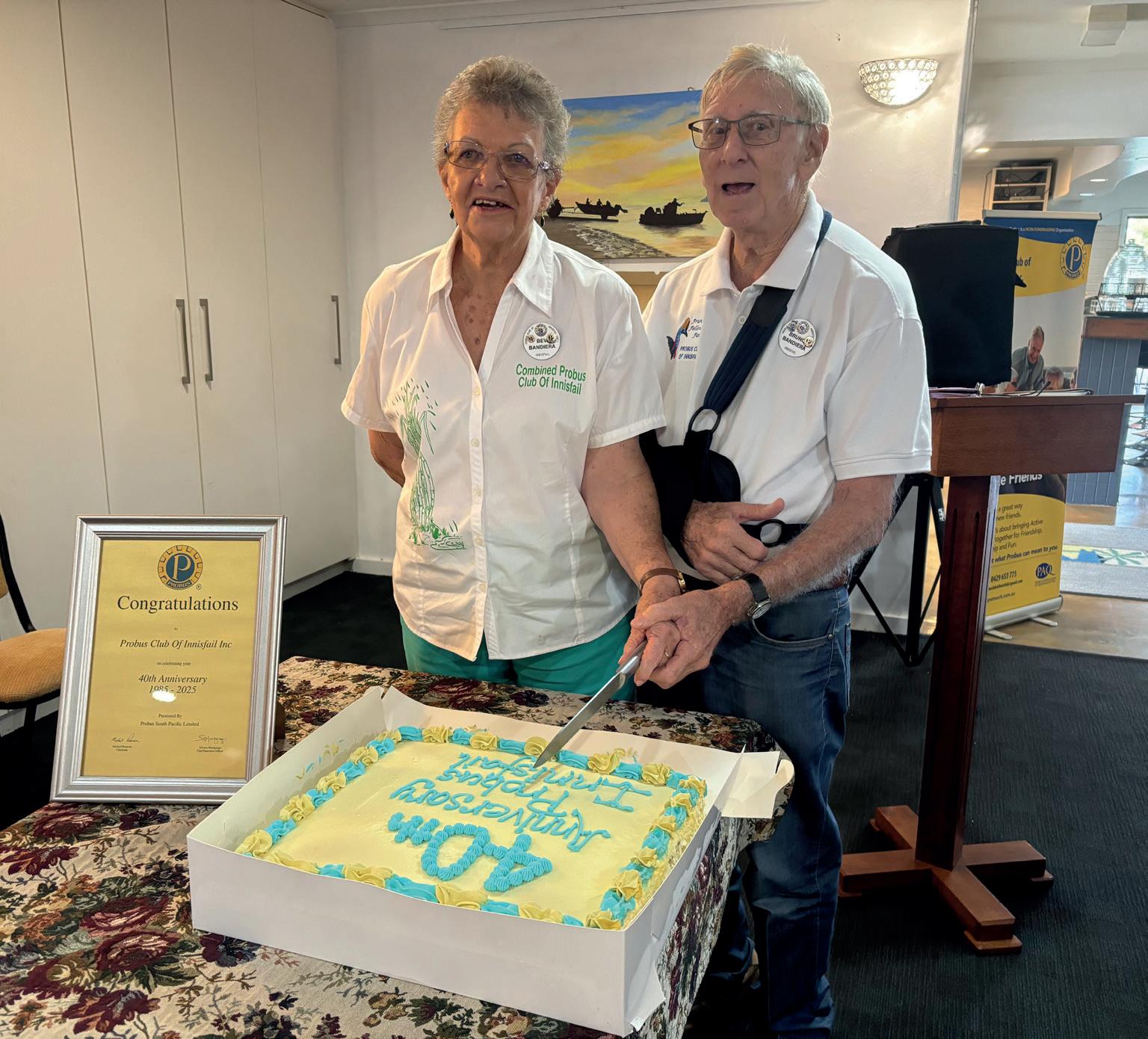
sweets. A 'lucky door' and 'raffle prizes' were well supported.
A highlight of the day was MP Shane Knuth's presentation of a 40th Birthday Certificate from PSPL to President Carolyn. This was followed by the cutting of the Birthday Cake, performed by two of the longest-serving members, Bev and Bruno Bandiera.

Recovery won’t happen overnight, but I promise that this Council will continue working closely with all agencies, government ministers, and the Premier to ensure they understand the extent of the damage and the unique challenges our region faces. I will continue to advocate at all levels of government to not only rebuild but to build back better.
Please stay informed through Council’s official channels our website, Facebook page, and disaster dashboard for the latest updates and recovery information. Together, we will recover, rebuild, and come back stronger.

It was a great day to renew friendships and make new ones. Everyone enjoyed themselves. A special thanks to our dine-out ladies, Margie Johnston and Rhonda Thomas, Marian and Lance, for organising the cake, raffle, and lucky door, and to our hosts, Merv, Yvonne, and Karen, for their hospitality and making this event enjoyable and one to remember. It was greatly appreciated.



found on Council’s website
www cassowarycoast qld gov au/fina ncial-hardship-assistance
C o u n c i l h a v e a c t e d q u i c k l y t o
s
r e c e n t f l o o d i n g d i s a s t
d i s r u p t i o n t o h o m e s , b u s i n e s s e s , a n d i n f r a s t r u c t u r e c a u s e d b y t h e
s e v e r e w e a t h e r e v e n t , “ N o r t h a n d
F a r N o r t h T r o p i c a l L o w ,
c o m m e n c i n g 2 9 J a n u a r y 2 0 2 5 " ,
C o u n c i l i s e x t e n d i n g t h e r a t e s
d e a d l i n e a n d e n h a n c i n g i t s
h a r d s h i p s u p p o r t m e a s u r e s t o
p r o v i d e m u c h - n e e d e d r e l i e f
T h e e x t e n s i o n i n a c c o r d a n c e w i t h
t h e L o c a l G o v e r n m e n t R e g u l a t i o n
2 0 1 2 a p p l i e s t o t h e J a n u a r y – J u n e
2 0 2 5 r a t e s p e r i o d w i t h t h e
e x t e n d e d d u e d a t e o f F r i d a y , 1 4
M a r c h 2 0 2 5 T h i s e x t e n s i o n i s f o r a l l r a t e p a y e r s a c r o s s t h e
C a s s o w a r y C o a s t r e g i o n a n d t h e
5 % d i s c o u n t o n g e n e r a l r a t e s w i l l
a l s o b e a v a i l a b l e t o t h o s e w h o p a y
t h e i r r a t e s a n d c h a r g e s i n f u l l b y
t h e e x t e n d e d d u e d a t e
I n a d d i t i o n , C o u n c i l h a s r e v i e w e d
a n d a m e n d e d i t s F i n a n c i a l
H a r d s h i p P o l i c y t o b e t t e r a s s i s t
t h o s e m o s t s e v e r e l y i m p a c t e d b y
t h i s d i s a s t e r
F
y e a r T h e S u p e r
R o u n d o f f e r s e x p a n d e d s u p p o r t , p r o v i d i n g a l a s t c h a n c e f o r l o c a l
i n i t i a t i v e s t o r e c e i v e f u nd i n g b e f o r e
J u n e 3 0
F u n d i n g i s a v a i l a b l e a c r o s s t h r e e t i e r s :
S m a l l g r a n t s – u p t o $ 2 , 0 0 0
M e d i u m g r a n t s – u p t o $ 5 , 0 0 0
L a r g e g r a n t s – u p t o $ 1 0 , 0 0 0
C o u n c i l ’ s C o m m u n i t y G r a n t s a n d
S u p p o r t P r o g r a m a s s i s t s a r a n g e o f
l o c a l o r g a n i s a t i o n s , i n c l u d i n g n o t -
f o r - p r o f i t s , S c h o o l P & C s , a n d a u s p i c e d i n d i v i d u a l s , w h o a r e w o r k i n g t o b r i n g p o s i t i v e c h a n g e t o t h e r e g i o n
E l i g i b l e a p p l i c a n t s m u s t s u b m i t t h e i r a p p l i c a t i o n s v i a C o u n c i l ’ s S m a r t y
G r a n t s p o r t a l , e n s u r i n g a l l
s u p p o r t i n g d o c u m e n t a t i o n i s
p r o v i d e d
A p p l y n o w a t
w w w c a s s o w a r y c o a s t q l d g o v a u / f u n d i n g - g r a n t s




Invasive pests and weeds are a growing challenge for communities across the Cassowary Coast, threatening our beautiful beaches, fertile farmland, and diverse ecosystems To combat these threats, Cassowary Coast Regional Council has endorsed the Cassowary Coast Local Area Biosecurity Plan 2025-2029, which is a blueprint for protecting our region’s natural treasures and local industries
The Plan emphasises cooperation as the preferred approach for pest management while acknowledging the necessity of compliance and enforcement when required Invasive species can drastically affect ecosystem function, reduce biodiversity, and compromise the productivity of the region’s primary industries, making proactive management a top priority for the Council
Council is committed to supporting residents and stakeholders in implementing the Cassowary Coast Local Area Biosecurity Plan, ensuring the Cassowary Coast remains a thriving and resilient region for generations to come
For more information about the Biosecurity Plan and how you can contribute visit www cassowarycoast qld gov au


If you’ve been affected by the recent flooding across the Cassowary Coast, there are a range of recovery grants, loans, and assistance schemes available to help you get back on your feet Whether you’re a homeowner, business owner, or farmer, support is available from both the Queensland and Australian governments
For further information visit www cassowarycoast qld gov au/floo d-recovery-assistance which has links to State and Federal Government funding information
To every volunteer and emergency services personnel who have helped our community - we are grateful Whether you are from the Cassowary Coast, Queensland, or you travelled from across Australia, your support has made a difference
Your kindness won't be forgotten




CR NICHOLAS
PERVAN
(DEPUTY MAYOR, DIVISION 4, PORTFOLIOINFRASTRUCTURE SERVICES )

CR. RENEE MCLEOD (DIVISION 6, PORTFOLIO - ECONOMIC DEVELOPMENT & TOURISM)

C working diligently t e assessments ar c g approvals ar secured, and all works meet th highest standards of safety and durability
Representatives from the Queensland Reconstruction Authority (QRA) visited the Cassowary Coast to see firsthand the areas impacted by the floods This visit allowed us to highlight not just the damage but also what is needed to rebuild stronger Council continues to work closely with QRA, as well as the state and federal governments to ensure we have the support needed to move forward
Council is committed to rebuilding our community stronger than ever and continuing to advocate nicholas pervan@ccrc qld gov au
CR. JEFF BAINES (DIVISION 5, PORTFOLIO - DEVELOPMENT, PLANNING
DISASTER GRANTS FOR LOCAL BUSINESSES, FARMERS AND NFPS
hat flood-affected ucers, small not-for-profits in bout the financial assistance available to help with recovery
Grants of up to $25,000 are available for those impacted by the North Queensland floods, providing much-needed support to get back on track Additionally, rural landholders or lessees of at least 10 hectares can apply for grants of up to $10,000
These extraordinary assistance grants are jointly funded by the Australian and Queensland Governments I encourage anyone eligible to visit www qrida qld gov au or call 1800 623 946 renee mcleod@ccrc qld gov au
CR CHRIS LITTLEMORE (DIVISION 1, PORTFOLIOWATER & WASTEWATER)
ELLEN
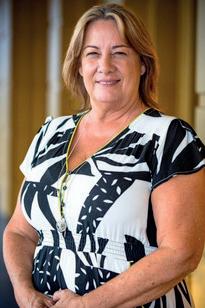
TRUST COUNCIL’S OFFICIAL CHANNELS
sidents to rely on channels, ou ook page, and disaster dashboard for the lates updates and guidance On these platforms, we are committed to providing clear, accurate, and timely information, especially during disasters and recovery

CR TRUDY TSCHUI (DIVISION 3, PORTFOLIO - COMMUNITY, CULTURE & LIVEABILITY

SUPPORTING OUR COMMUNITY
m recent disasters, g to see locals step ne another As we age everyone to become a “tourist in your own backyard ” Explore our local shops, cafés, and services as every small act of support helps our community stay strong
Recovery is a team effort, and we recognise the dedication of not only our Council teams but also emergency services, state and federal agencies, local organisations, and the many volunteers who have stepped up to support our community We sincerely appreciate the patience, resilience, and generosity of our community as we navigate this journey together ellen.jessop@ccrc.qld.gov.au
And this February, there’s another fantastic way to connect with your community during Library Lovers’ Month! We are celebrating with fun programs, promotions, and a chance to borrow up to 30 items. It’s the perfect time to rediscover some treasures at your local library.
Our libraries are more than just books; they’re vibrant community hubs
trudy.tschui@ccrc qld gov au

STRONGER WATERWAYS FOR A RESILIENT CASSOWARY COAST
T Coast River
I t is currently u to improve water f on, and enhance flood mitigation in our region
In February, works kicked off in Silkwood and Mourilyan drainage areas, focusing on wide spread drainage maintenance Unfortunately, recent flooding temporarily halted progress but now, with conditions improving, these crucial projects are resuming
These upgrades are a priority for our region, and I will continue advocating for better flood mitigation solutions to protect our communities
This project has been funded by the Cassowary Coast Regional Council through Cyclone Jasper DRFA funding jeff baines@ccrc qld gov au


In times of crisis, the strength and resilience of our communities shine through While it’s unfortunate that disasters serve as a reminder of this, they also highlight the dedication and generosity of those who step up to help
As we continue rebuilding, repairing, and improving what was lost, I want to acknowledge and appreciate everyone contributing to our region’s recovery. Council continues to assess infrastructure across the region and has already begun repairs.
Recovery takes time, but together, we will restore not just our infrastructure, but also our communities and our spirits. Thank you to everyone chris.littlemore@ccrc.qld.gov.au




When I first arrived in Mission Beach, I was introduced to one of its most enduring icons: Marilyn the tree. Now, I know what you’re thinking—how does a tree earn such a grand title? Well, Marilyn has loyally stood by the roadside from Mission Beach to Tully for years, and thanks to local historian Don Wheatley, I got the full scoop on her story (and her fabulous name).
REGISTERED 1240132 www.purkonconstructions.com.au andrew@purkonconstructions.com.au ANDREW
Last year, during the Tully centenary celebrations, I was horrified to see someone had given Marilyn a “make-under.” Her swimwear was, let’s just say, less Bondi chic, more backyard bargain bin. Honestly, for such a momentous occasion, Marilyn deserved nothing less than something designed by an Australian fashion icon! Think

Akira Isogawa meets the rainforest. Instead, we got… well, a wardrobe malfunction. Every time I passed her, I threatened Don with the same declaration: “One day, I’m going to stop and fix those ridiculous bathers!” It became a ritual—a roadside cry for sartorial justice.
BUILDER/OPERATOR 0410577944
Recently, as I drove past, I repeated my usual refrain. But on the way back, I nearly swerved off the road in shock. Someone—some unsung hero of style—had already done it! Marilyn was back in her red bikinis, looking as glorious as the queen of the roadside she is.
To whoever brought Marilyn back to her former glory, I salute you. Love your work! Marilyn, you’re a true Aussie legend, and the roadside’s never looked better.















IN today’s fast-paced world, the pursuit of sound health goes beyond simply treating symptoms. True well-being comes from a balanced approach that nurtures both body and mind. Wholistic healthcare is an integrative model that emphasizes the interconnectedness of physical, mental, and emotional health, providing individuals with sustainable ways to achieve vitality and resilience.
The Pillars of Wholistic Healthcare
Wholistic healthcare is built on several key principles that support overall well-being:
1. Nutrition as a Foundation
A nutrient-rich diet is essential for maintaining a healthy body and a sharp mind. Whole foods, including fresh vegetables, fruits, lean proteins, and healthy fats, provide essential vitamins and minerals that fuel bodily functions and support cognitive clarity. Avoiding processed foods, excess sugar, and artificial additives helps prevent inflammation and chronic diseases while promoting sustained energy levels.
2. Physical Movement for Vitality
Exercise is more than just a tool for weight management—it enhances cardiovascular health, strengthens muscles, improves mood, and sharpens mental focus. Whether it’s walking, strength training, yoga, or outdoor activities, regular movement keeps the body strong and agile while reducing stress and anxiety.
3. Mental and Emotional Well-being
A sound mind is as crucial as a sound body. Practices such as mindfulness, meditation, journaling, and therapy can help individuals manage stress, process emotions, and build mental resilience. Prioritizing mental health through positive social interactions and self-care routines fosters emotional stability and a greater sense of fulfillment.
4. Restorative Sleep
Quality sleep is a cornerstone of wholistic healthcare. During rest, the body repairs tissues, strengthens the immune system, and consolidates memories. Poor sleep can contribute to fatigue, brain fog, and weakened immunity. Establishing a healthy sleep routine, minimizing screen time before bed, and creating a restful environment contribute to deeper, more restorative sleep.
5. Natural and Preventive Approaches
Wholistic healthcare emphasizes prevention over intervention. Utilizing natural remedies such as herbal medicine, essential oils, acupuncture, and chiropractic care can complement conventional treatments. Regular checkups, detoxification practices, and a proactive approach to health empower individuals to prevent disease before it arises.
6. Spiritual and Community Connection
A sense of purpose and belonging plays a crucial role in well-being. Engaging in faith-based activities, community service, or personal reflection can provide emotional grounding and inner peace. Surrounding oneself with a supportive community fosters a positive mindset and reduces feelings of isolation.
and Wholistic Health
Acupuncture is a part of Traditional Chinese Medicine, a complete medical system used in China for 2,500 years. The Chinese believe that emotions are linked to physical organ systems. Through diagnosis and treatment, acupuncture helps restore balance by stimulating specific points on the body that correspond to different functions. Acupuncture has been scientifically proven to increase feel-good hormones, aiding both pain relief and emotional well-being. The Acupuncture Evidence Project has compiled studies showing over 300 health conditions improve with acupuncture treatments.
Frequently Asked Questions About Acupuncture
1. How can acupuncture help with both my physical and emotional wellbeing?
Acupuncture works by addressing imbalances in the body and restoring harmony. Each acupuncture point has a specific function and can aid
different parts of the body. When balance is disrupted, it can manifest as both physical and emotional distress. Acupuncture stimulates points that support the body’s natural healing process. Additionally, research has shown that acupuncture increases the release of endorphins, promoting both pain relief and emotional stability.
2. What areas of my health should I focus on first to see the most improvement?
Everyone’s needs are different, but foundational health improvements should begin with lifestyle, emotional well-being, and dietary changes. These elements are key to achieving long-term health benefits.
3. How many sessions will I need before I start noticing changes?
The number of sessions depends on the severity and duration of the condition. Acute conditions may require up to four sessions, while chronic conditions often need a course of 12 sessions or more. Many individuals notice gradual improvements throughout their treatments. Acupuncture can also be used preventatively or as a monthly tune-up for general well-being.
4. Are there lifestyle or dietary changes that would complement my acupuncture treatments?
Yes, lifestyle and dietary changes enhance acupuncture’s effectiveness. Acupuncture identifies organ imbalances, and specific foods, flavors, and even seasonal adjustments can help restore balance. Lifestyle changes, such as reducing stress and maintaining a healthy routine, also contribute to longterm well-being.
5. What can I do between sessions to support my healing and feel better daily?
Following personalized dietary and lifestyle recommendations is essential. Simple yet effective habits include maintaining a regular sleep schedule, eating balanced meals, managing stress, engaging in physical activity, and practicing self-care. Incorporating Chinese herbal medicine can also support the body’s healing process between acupuncture sessions.
Embracing wholistic healthcare is a journey that starts with small, consistent lifestyle changes. Begin by evaluating areas in need of improvement, setting realistic goals, and implementing healthier choices gradually. Seeking guidance from wholistic health practitioners, nutritionists, or wellness coaches can provide personalized support and encouragement.
Conclusion
Wholistic healthcare is a comprehensive approach to achieving soundness of body and mind. By nurturing nutrition, movement, mental health, rest, preventive care, and spiritual connection, individuals can cultivate a fulfilling and resilient life. The key is to take proactive steps toward wellness and embrace the journey to optimal health—one balanced step at a time.

QCAR Chair Christian Lago says he hopes the LNP can pressure the PM to ‘do the right thing by regional Queenslanders’ and declare Category D disaster assistance to unlock vital funds
QCAR staff welcomed multiple politicians to Ingham on Saturday morning (February 15) as they inspected flood damage to sugarcane farms and discussed why it is crucial to declare Category D disaster assistance.
It comes after the state and federal government on Thursday announced the release of Category C grants capped at $25,000 for flood-affected primary producers.
Joining QCAR Chair Christian Lago, Herbert District Manager Lawrence Di Bella, and Herbert District Committee Junior Chair John Board were Queensland Premier David Crisafulli, Federal Opposition Leader Peter Dutton, Senator Susan McDonald, Kennedy MP Bob Katter, and Hinchinbrook MP Nick Dametto.
“They listened to our concerns as far as eligibility and the grants that are needed to recover from this flood disaster and it was good of them to put their feet on the ground and assess the damage for themselves,” Mr Lago said.
“Hopefully they can put pressure on the federal government and Prime Minister Anthony Albanese to come forth with Category D grants and make the money accessible.
“This disaster broke records for the Herbert region with floodwaters surpassing the 15.2m mark recorded in the infamous 1967 flood.
“A lot of farmers were financially stretched even before this flooding. If they now outlay money on recovery efforts and have their grant application denied, many businesses will sink.
“So, along with pushing the governments to announce Category D level-grants, we’re asking them to extend the grant application periods as we’re obviously in a skills shortage, and recovery works may take longer than 12 months to complete.”
Mr Lago said the flood caused significant damage with farmers now faced with expensive earthworks, repairs to paddocks and banks, recovery of eroded topsoil, and the mass replanting of cane that was waterlogged and now boiling in shallow water to the point of ruin.
“But we’re in the midst of the wet season so many of these works can’t take place until April, May, June at the earliest,” he added.
QCAR Herbert District Manager Lawrence Di Bella, whose own paddocks in Inghams have incurred damage in the vicinity of hundreds of thousands of dollars, said there was further pressure on flood-affected North Queensland sugarcane farmers with planting windows fast approaching.
“In the Herbert, we would normally start planting in May and would finish in late September, early October so with the flood damage, there’s an incredible and exhausting amount of work ahead and some farmers may not be able to plant this year,” Mr Di Bella said.
“By the time repairs are made, paddocks will run out of moisture and make planting non-viable.
“We’ll do the best we can to get the cane in the ground, because if we don’t, there goes our income, but we’ve got farms in Ingham that have been underwater for 14 days now.
“We’re going to lose them because of the heat.”
Mr Di Bella estimated there could be up to one million tonnes less of cane cut across the Herbert this year, resulting in between $25 to $50 million in economic losses.
But he said the full impact of the disaster was yet to be realised as floodwaters were still receding.
Mr Lago said QCAR was also anticipating losses for farmers in the Burdekin region, with further direct and indirect impacts on the milling and harvesting sectors.
“Category D grants are vital in helping communities recover from natural disasters, and we know this recovery process will be long and heartbreaking, with the social and economic impacts felt by not only those in the sugarcane industry but also by
the local communities, families and businesses the sector supports,” he said.
“There is no doubt damage to infrastructure will place strain on the mills to meet QCAR’s requests for this year’s crush to begin in early June, as it traditionally had and needs to.
“We cannot overstate how important a Category D declaration is to prevent further delays, which would inevitably force farmers out of business.
“We trust Mr Albanese will do the right thing by regional Queenslanders, and we anticipate his prompt declaration of extra funding.”
Also in attendance during the politicians’ tour of Ingham were QCAR Herbert District Committee Members Walter Giordani and Chris Butler – both of whom incurred extensive damage to their sugarcane properties, AgForce North Queensland Director Michael Penna, Hinchinbrook Shire Council Mayor Ramon Jayo and Deputy Mayor Karen Brown, Australian Banana Growers’ Chairman Leon Collins and Stakeholder Engagement and Advocacy Manager Kathryn Dryden, and Cosca Ingham Senior Accountant Ross Girgenti

The local community were excited to hear the announcement that the Ollera Creek Bridge has officially reopened to all traffic. Despite challenging weather conditions, dedicated teams worked tirelessly to expedite repairs, restoring this crucial link for FNQ communities.
This bridge is essential for connecting Townsville and Cairns, on February 10 now accessible to the public following its reopening to freight, supply, and emergency vehicles.
Thanks to this milestone, Life Church Ingham has received tremendous support from Global Care, benefiting from community cleaning services and generous donations from Big W Castletown. TYTO, sponsored by Sunrise Rotary Townsville, continues to play a vital role in community initiatives with their provision of meals to people in need.
For the latest traffic alerts, road closures, and updates on major roads across Queensland, visit QLDTraffic. You can also stay updated via the QLDTraffic app or by calling 13 19 40.

SARI RUSSO
GRAZIERS in the Cassowary Coast region are facing a severe financial burden due to the highest Rates in the Dollar (RID) in Queensland. According to the Cassowary Coast Graziers Association Inc. (CCGA), local graziers pay rates that are double those of their closest east coast peer, the Burdekin, and nearly three or more times higher than in neighbouring shires. The CCRC rating advisory committee report and Independent DPI modelling confirms that graziers in this region allocate up to 15.6% of their sales and indicatively over 30% of their grazing profits to general rates alone, placing immense pressure on their financial sustainability

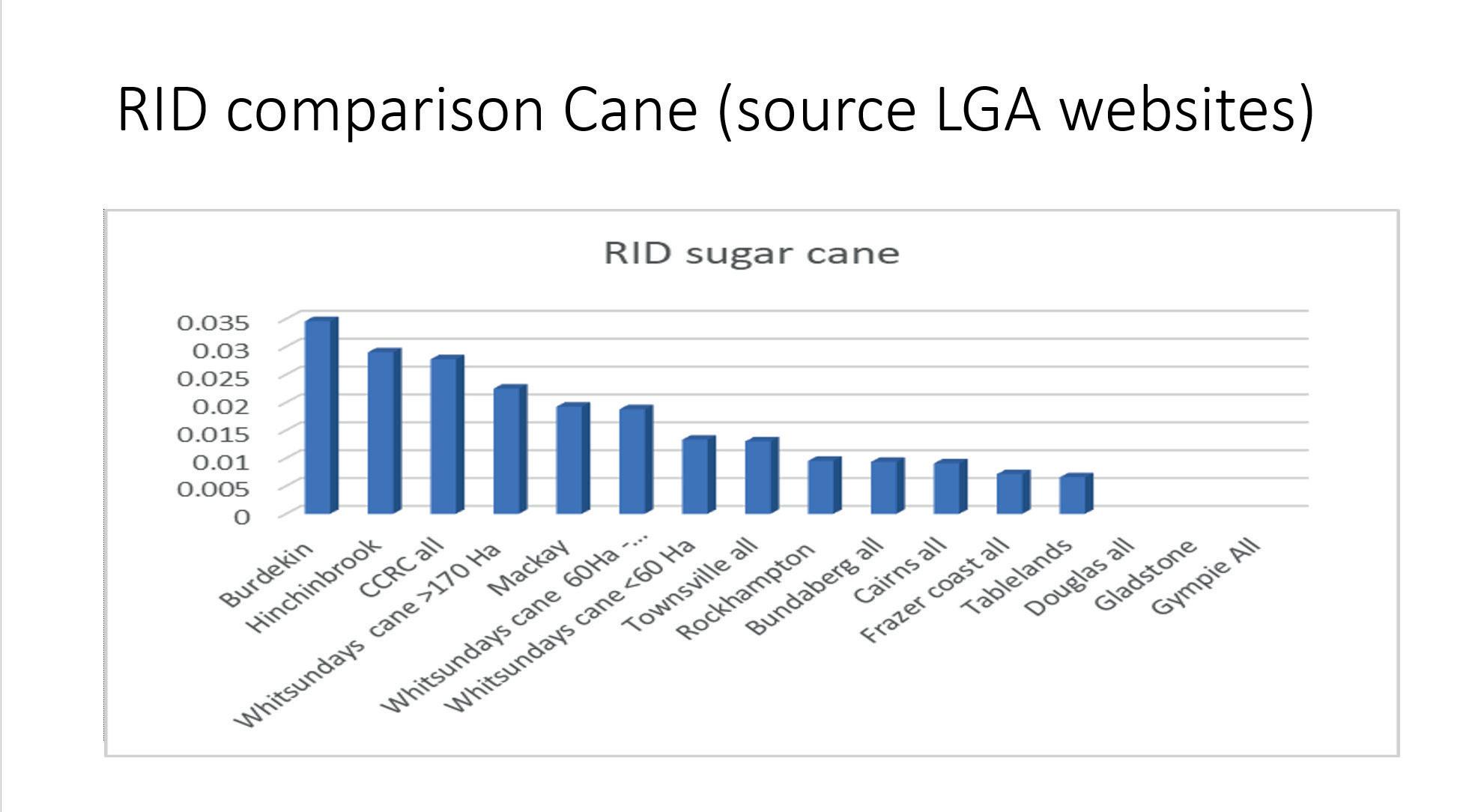

The Cassowary Coast Regional Council (CCRC) was asked whether graziers in the region are subject to disproportionately high rates compared to neighbouring areas and other east coast peers. Their response: “Council have historically rated all Primary Producers at the same rate in the dollar. The % of Council rate yield from the Primary Production Category has reduced over the last 5 financial years The impact on Graziers has derived from increases in the unimproved land value where the land is used for grazing livestock over and above other primary producers.”
However, the CCGA contends that equating graziers with other primary producers is fundamentally flawed. The association seeks greater clarity on how rates are determined, emphasizing that most councils’ base rates on valuations and land use of course and also two other key factors:
The burden on council services (user-pays principle).
The ability of the land to generate revenue.
According to the CCGA, If these almost universal criteria are applied, it shows grazier rates are grossly inequitable, supporting the benchmarking data. Unfortunately, we are forced to guess what criteria CCRC use. The association argues that the uniform RID across all primary production categories may be based on an incorrect assumption that all farmlands can support any type of agricultural
activity. They assert that, due to factors such as topography, soil types, flood-prone areas, and irrigation access, certain lands are best suited exclusively for grazing. Moreover, new reef regulations further limit land use options, reinforcing their position. CCRC was the only “high rates” shire among the QLD east coast peers to not have grazing as a separate category up until the last budget, but the damage was already done.
Seeking Transparency in Rate Determination
The CCGA has urged the CCRC to adopt a more transparent approach to ratesetting, just like every other QLD council has, Cairns Regional Council, for example, which lists the following considerations within their revenue policy:
Land use, Availability of services, Consumption of services, Valuation and Income-producing capacity of the land.
Despite sustained advocacy efforts, graziers remain frustrated by the lack of transparency. The CCRC has not clearly defined what constitutes "equitable" rates, leaving graziers questioning the rationale behind their disproportionate financial burden. Unlike other councils that provide clear revenue policy breakdowns, the CCRC distributes a $45 million general rates burden without a transparent methodology.
CCRC is the only shire CCGA could identify in the state that does not expand on the criteria they use for setting rates within their revenue policy / statement. They simply state rates will be “equitable”.
Historical Context and Advocacy Efforts as reported by CCGA
The issue of inequitable grazing rates dates back to 2008, when the amalgamation of the South Johnstone and Cardwell Shires placed all agricultural land into a single rates category. At this point the ability to adjust the rate in the dollar to compensate for valuation changes that serves as a “safety net” that most ratepayers enjoy was lost for CCRC graziers. Since then, graziers have faced continuous challenges: 2012 & 2016: CCGA coordinated appeals to CCRC regarding grazier rates had little impact.
2016: A Revenue Advisory Committee (RAC) forum was held without grazier representation. The proposal to create a separate grazing category was rejected based on the assumption that all farmland could support any agricultural activity 2023: A petition signed by 679 people called for equitable rates for graziers. However, the 2023 budget did not reflect any significant changes, leading to the formation of the CCGA.
2024: Another RAC forum presented data indicating that CCRC rates do not align with the user-pays principle. The CCGA pointed out that while residents contribute less than 5% toward road network costs, no response was received from the CCRC.
2024 Budget: The council introduced a new "Livestock" category, but primary production rates remained unchanged. The CCRC shifted its revenue policy from a "user-pays" model to an "equitable" model, yet rates settings did not change meaningfully.
Post-Budget 2024: CCGA requested that CCRC define their criteria for equitable rates. This request was denied. A formal complaint encountered legal roadblocks, and an appeal to the Local Government Minister resulted in guidance to approach the ombudsman.
Ombudsman Response: A confidential response acknowledged the CCRC’s lack of transparency but indicated that, since elected councillors had approved the budget, further investigation was limited.
The Financial Disparity
Graziers in the Cassowary Coast region face stark financial inequalities: CCRC graziers pay twice as much in rates as their next-highest east coast peers. Grazing rates in the Cassowary Coast are three times or more higher than in neighbouring shires like Hinchinbrook.
Primary producers as a whole contribute 28% of the total general rates despite accounting for only 8% of ratepayers and 20% of total land valuation.
Road network costs are disproportionately shouldered by primary producers, while urban residents contribute minimal amounts.
CCGA’s Call for Fairness
A spokesperson for the CCGA summarized their concerns:
“Given that local graziers pay the highest rates in the state— triple or more than our neighbours—and the data shows that graziers place a minimal burden on CCRC infrastructure while generating lower revenue from their land, our request for transparency is entirely reasonable. We are deeply disappointed that the CCRC chose to engage external lawyers rather than simply provide a clear answer.”
“CCRC recently distributed a glossy brochure with rate notices, claiming they are ‘accountable to our community’ and committed to compliance with their policies. However, we have yet to see these promises reflected in action. No other CCRC ratepayer category is the highest among Queensland’s east coast peers, let alone by double. Graziers are a distinct minority, and given the council’s lack of engagement, it is hard not to suspect that our limited voting power plays a role in our predicament. We have been a silent minority for too long—we may not remain silent much longer.”
continued page 15
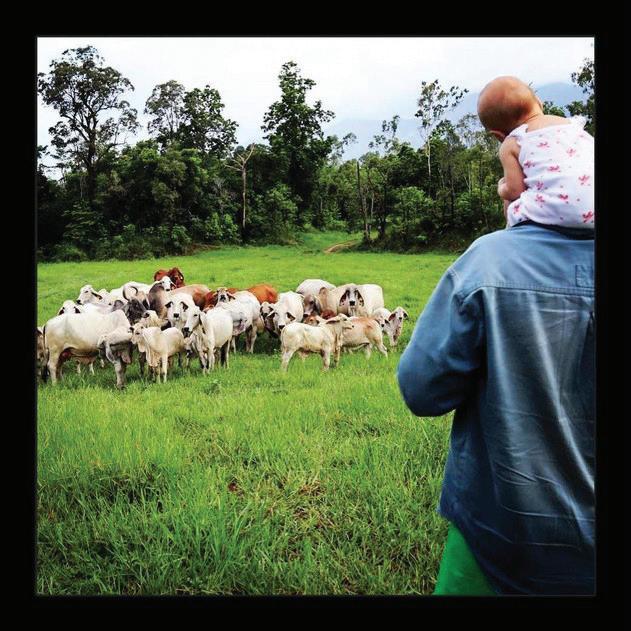
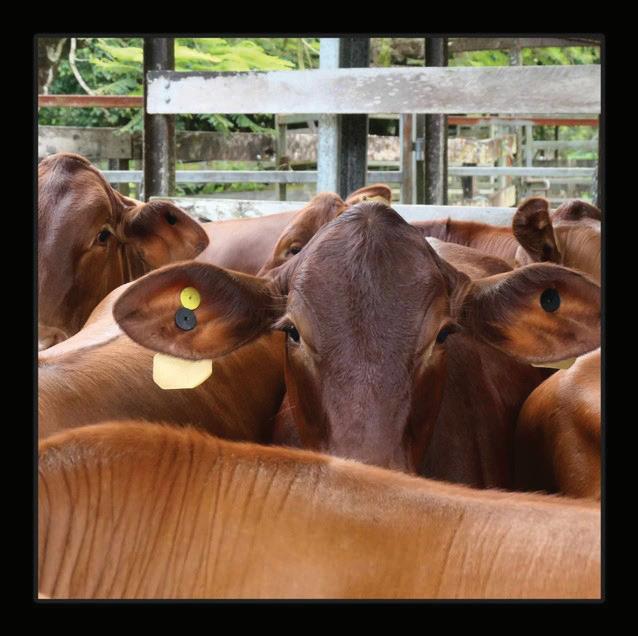
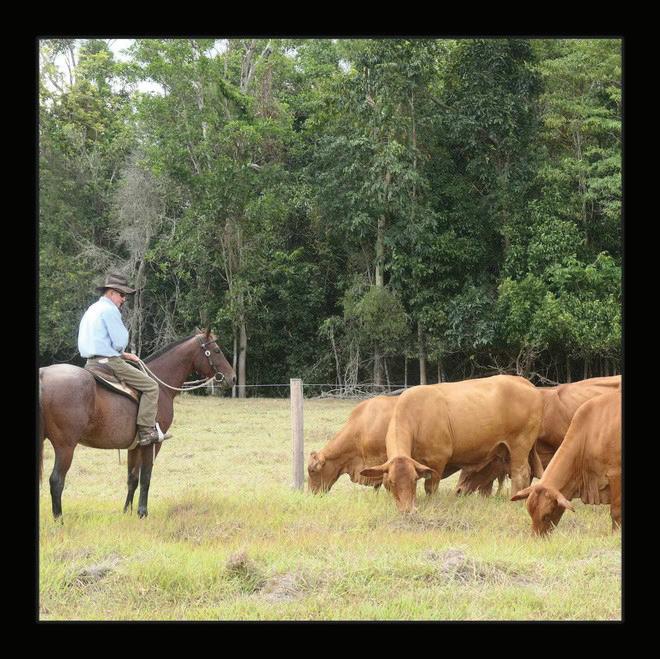

Further Response from the CCRC:
Question: What specific criteria does CCRC use to define "equitable" rates for different sectors, particularly for graziers?
Response: General rates are defined in the LG ACT 2009 as being for services, facilities and activities that are supplied or undertaken for the benefit of the community in general (rather than a particular person). CCRC thoroughly consider application of the principles across the rating policies to ensure a fair and equitable system is implemented for the benefit of all ratepayers. This includes parcels of similarly valued land which are used for the same or similar purposes, and receive similar services should be levied similar general rates. Also, land valuations are used as the basis of the general rates and differential general rates levied. That is, more valuable land should be levied a higher general rate than less valuable land used for similar purposes.
Question: How does the CCRC plan to address the concerns raised by the CCGA regarding rates equity in future budget considerations?
Response: Councils rating strategy will be adopted by Council as part of the 2025/26 budget process. This decision will be informed by the recommendations of the Rating Advisory Committee, which Council established in 2023, taking into account changes in land revaluations, ratepayer affordability, and the principles of equity and fairness across all ratepayers. The CCGA were represented on the Rating Advisory committee and informed recommendations. Council remains committed to ensuring that rates are set in a manner that balances the financial sustainability of the region.
Question: The CCRC is committed to transparency in its rates-setting processes, as outlined in its revenue policy. How is the CCRC ensuring their transparency in
the rates department?
Response: The Revenue Policy and Revenue Statement set out clear and concise principles that guide the rates-setting process. Council remains committed to adhering to these principles to ensure consistency and fairness. In addition, Council will continue to consider recommendations from the Rating Advisory Committee to enhance equity and transparency in rating decisions.
This process will be utilised again in the future to ensure community input remains an integral part of the rates-setting framework. Differential rating does not convert general rating into a “user pays” system. It is inherent in the nature of a system of property taxes that there will be imbalances between tax paid and services received, and differential rating cannot eliminate those imbalances; it can merely make them a little less stark or unfair.
Despite years of advocacy, the CCGA is still awaiting a clear justification for the current rate structure. The association remains committed to pushing for transparency and fairness, advocating for data-driven solutions that ensure local graziers are not disproportionately burdened. CCGA plead with CCRC to provide the principle they use in setting rates, “equitable” is simply too board and subjective to distribute $45Mil in general rates burden by. And this case in point shows it absolves CCRC of accountability.
With the next budget cycle approaching, the CCGA views this as a crucial opportunity for the CCRC to rectify existing inequities. Graziers play an essential role in the region’s agricultural sustainability, and a fairer rate-setting system is necessary for their continued viability. Until meaningful change occurs, the CCGA will persist in its fight for accountability, ensuring that local graziers receive the fairness they deserve.
LEADER of The Nationals David Littleproud said the latest AUSVEG Industry Sentiment Survey report shows a third of vegetable growers are considering leaving the $5.8 billion industry this year, in a worrying sign amid a cost-of-living crisis.
Mr Littleproud said it is clear vegetable growers are still not getting the support they need to get food from paddock to plate, and almost 50 per cent of vegetable, potato and onion growers consider themselves financially worse off than a year ago.
“Our farmers are clearly struggling,” Mr Littleproud said.
“When supply goes down, prices go up, so 32 per cent of vegetable growers quitting would have huge consequences for families at the supermarket checkout.
“Unfortunately, the industry is going backwards because Labor has treated our farmers with contempt and ignored the Coalition’s calls for supermarket reform as far back as 2022.
“Labor’s Food and Grocery Code of Conduct won’t even come into effect until April this year, despite the cost-of-living crisis being now, not in April.
“Our farmers and families need the Coalition’s plan, which will give the Australian Competition and Consumer Commission (ACCC) powers to audit a supermarket at any time.
“The Coalition’s plan will create a Supermarket Commissioner, to act as a confidential avenue for farmers and suppliers to address the fear of retribution. This will be a game- changer for farmers and suppliers because it will change culture and
protect those who need it most.
“We will also introduce sector-specific divestiture powers – in the hands of the ACCC and the courts, not politicians – as a last resort to address the behaviour of supermarkets and to put an end to instances of price-gouging.
“We will have infringement penalty notices, or on the spot fines, of $2 million, compared with Labor’s measly amount of $198,000, which could be pulled out of a till at any city supermarket and does nothing to change culture.”
Mr Littleproud added the AUSVEG survey comes on top of the recent Jobs and Skills Australia report, which also shows the agricultural industry remains in limbo.
“The Pacific Australia Labour Mobility (PALM) scheme has become unviable for employers due to the cost and unworkable requirements.
“The number of PALM workers in agriculture has now fallen by 25 per cent, or more than 5,700 jobs, since Labor meddled with the program in 2023.
“There is also uncertainty around the minimum 30-hour settings. Businesses are making decisions now about engaging PALM workers without knowing what their conditions will be after July 1.
“A future Coalition Government will also bring back the Agriculture Visa, helping farmers get the workers they need to get food from paddock to plate, and we will ensure the 88-day backpacker work visa remains in place.”












Tully Family Church, 9am, Sun, 2 Watkins St, Tully Cardwell AOG, 9:30am Sun, Shire Hall, Cardwell
Mission Beach Family Church, 6pm, Sun, Unit 3, 2-4 Stephens Street, Mission Beach
Cross Culture Church, 10am, Sun, 28-32 Townsville Road, Ingham
Churches of Christ Care
Rockingham Home Aged Care Service, 9am Fri, 3rd Fri of month, 40 Jamieson St, Cardwell
St Rita’s Babinda, 7am, Sun, 15 Church St, Babinda
Mother of Good Counsel, 6:30pm Sat Vigil, 9am, Sun, 90 Rankin St, Innisfail
Our Lady of Fatima, 10am, Sun, 32 Glasgow Street, El Arish,
St John the Evangelist, 6pm, Sat, 4 Harold Street, Silkwood,
St Rita’s South Johnstone, 7am, 1st, 3rd & 5th/month, 5 Green Street, South Johnstone Christ the King, 7am, 2nd & 4th/month, 10 Harbour Road, Mourilyan Holy Spirit, Mission Beach 7am Sun, 12 Webb Rd, Wongaling Beach
St Clare of Montefalco Church, 6pm Vigil Mass, Sat 9am, Sun, 13 Mars St, Tully
Our Lady Star of the Sea, 5pm Sun (except 1st Sunday), 121 Victoria St, Cardwell Ingham Region Catholic Parishes:
St Patrick’s, 8:30am, Sunday, 18 Abbott Street, Ingham
St Peter’s, 7am, Sunday, 10 Scott Street, Halifax, Canossa Chapel, 10am, Sunday, St Teresa’s College / 3819 Abergowrie Rd
St Teresa’s, Trebonne, 10am
Day Adventist Innisfail, 10:30am, Sat ,Bible Study, 11am, Sat, 114 Lawrence Road, Bamboo Creek Tully Seventh Day Adventist Church, Sat 9:30am Sabbath School, Sat 11am, 1 Edward St, Tully
Uniting Churches Baptist Churches
Cassowary Coast
Uniting Churchs: Innisfail, 10am, Sun, 8 Scullen Ave, Mighell, Innisfail Mission Beach, 8am, Sun, 2224 Tully-Mission Beach Rd, Mission Beach, Ingham District Uniting Churches: Ingham, 10am, Sun 16 Herbert St, Ingham Halifax, 8am, Sun 12 Anderssen St, Halifax Blue Haven Lodge, Ingham, 11am (2nd & 4th Tues)
St Marks Lutheran Church, 9am, Sun, 34 Townsville Road, Ingham Non-denominational
St Albans Anglican Church, 9am, Sun, 83 Rankin Street, Innisfail
St John Anglican Church, 5pm, Sat, 2 Black Street, Tully John Oliver Feetham Pioneer Memorial 5pm, Sat, 45 Bruce Highway, Cardwell
St John Anglican Church, 3pm, 3rd Sun of month, Motel Chapel, Kurrimine Beach Holy Trinity (Ingham) 9am, Sunday. 37 McIlwraith Street, Ingham All Souls, 7.30am, Sun, 10 Four Mile Road, Victoria Estate
Mal Siriwardhane is the CEO of B dynamic, the country's leading 3PL provider for retail and he is seeing first hand the trends and changes that will impact the retail sector this year.
• The cost of living crisis has created hyper-savvy shoppers
• As a result we can expect to see sweeping changes in retail in 2025
• Fast and efficient customer service and delivery will drive growth
• Offers will be far more targetted to trigger spending
• A number of significant trends will impact retail this year and these are outlined in the full release below
“Consumers have had to be very savvy over the last few years in response to cost-of-living pressures. This has changed consumer behaviour and also spearheaded some interesting trends, all of which provide opportunities and challenges for retailers,” said Siriwardhane.
WHILE retail sales surpassed expectations during the Black Friday and Cyber Monday sales in November, overseas fast fashion cut price retail giants such as Shein and Temu continued to gain market share in Australia.
Mal Siriwardhane is calling on Australian retailers to step up and focus on the strengths that local retailers offer and to actively seek out local partnerships, connections and service offerings that shoppers value in order to galvanise their future against these monolithic international giants.
Mal Siriwardhane is the founder and CEO of B dynamic, Australia's leading and fastest growing third party logistics provider and ecommerce enabler for the retail sector.
"The retail landscape is undergoing a seismic shift and Australian businesses must innovate and adapt to stay competitive. By leveraging their unique strengths, local retailers can carve out their own space in this challenging environment," Siriwardhane said.
Strategies for retail survival and success
"Australians value service and they like talking to local support on the ground. If Australian retailers are going to maintain and grow market share and fend off the might of these international players they need to focus on local advantages," Siriwardhane said.
"Retailers need to highlight their Australian identity by emphasising their local presence, sustainable practices and community engagement. Consumers are increasingly drawn to brands that align with these attributes and will share their wallet with these businesses because they like the safety of the cultural connection and local proximity. In short, Aussies like doing business with other Aussies."
Personalise the customer experience
"Local retailers need to personalise the customer experience to support Australian shoppers. Investing in tools and technology that allow and empower retailers to understand and cater to individual customer preferences is essential. Tailored marketing and personalised shopping experiences that exude Australian values is the ideal way to differentiate a retail brand in the market," Siriwardhane said.
Strengthen digital presence
"Shoppers connect with imagery and movement. Local retailers are encouraged to develop user- friendly e-commerce platforms and maintain an active presence on social media. High-quality visuals, engaging content and responsive customer service online with a local flavour is a clever way to drive traffic and build loyalty," Siriwardhane said.
Offer fast and reliable service
"International players are shipping at speed but local retailers have the advantage of proximity. Competing with retail giants requires matching their efficiency with even better delivery options and customer service experiences. I strongly urge Australian retailers to partner with reliable logistics providers or explore same-day and next-day delivery options to meet customer expectations," Siriwardhane said.
"A good third-party logistics provider is not only able to help reduce operational retail costs by up to 70 percent through efficiencies, technology, clever systems and economies of scale, they are also able to offer retail customers a level of service that creates a compelling and memorable brand experience."
Diversify product offerings
"Many large international players offer similar products. A good strategy is to stock unique or niche products that global players can't easily replicate. Collaborating with local artisans or exclusive suppliers can add value and uniqueness to a retailer's inventory," Siriwardhane said.
Build strong community connections
"Building strong community connections is essential. Local retailers are in the ideal position to engage with their local communities through events, sponsorships or partnerships. Building trust and loyalty among local customers creates a competitive edge against international retailers," Siriwardhane said.
Empowering Australian retailers
"By embracing innovation, technology and customer-centric strategies, small and mid-size retailers can hold their own against global competitors. The key is to focus on what makes the business unique and ensure customers see that value," Siriwardhane said.
"In the current market price is a strong driver of consumer motivation and choice however often it comes with risks especially if the retailer is overseas and located in a primarily non-English speaking country. Retailers can compete and win against global retail giants by adopting key strategies."
Cross-Sector 3PL
Whole of supply chain technology solution
Effortless multifaceted coordination of logistics
Seamless integration with business
Visibility, data and powerful insights
B dynamic Logistics has introduced a new category of logistics in Australia called Cross-Sector 3PL. It brings together all areas of logistics, expertise and capability under one roof, within one dynamic system that is capable of operating thousands of transactions within a short period of time. The result is seamless cost-effective supply chain operations.
Cross-Sector 3PL connects customer systems, warehouse management systems and transporter systems, providing customers with extensive integration options, custom data feeds, business intelligence, dashboards and reporting for all facets of logistics including big and bulky, port/manufacturing facility to warehouse, warehouse to stockists and warehouse to customers.
About B dynamic Logistics
B dynamic Logistics is part of the B dynamic Logistics Group. B dynamic Logistics is Australia's leading one stop shop for ecommerce enablement and thirdparty logistics. B dynamic Logistics works with businesses to design and develop customised online stores, integrate flexible logistics solutions and provide pick, pack and delivery services to their customers.
The B dynamic Logistics Group was created in 2005 and currently distributes products for over 100 iconic retail brands and is one of Australia's fastest growing logistics companies. The company has multiple sites in New South Wales and has now expanded its footprint into Queensland with a mega facility in Brisbane.

Flooding across North Queensland has left many communities facing a long and costly recovery. Homes, businesses, roads, and farms have all been affected, and getting back to normal will take time.
For sugarcane growers, one of the biggest challenges ahead is replanting lost crops – a cost that disaster recovery grants don’t currently cover.
While these grants help with cleanup and infrastructure repairs, they stop short of funding replanting, even though getting crops back in the ground is essential for growers to move forward.
Cane is a hardy crop, but when young plants spend too long underwater, they don’t recover.
In regions like the Burdekin and Herbert River, where floodwaters have lingered, many growers will need to start over.
CANEGROWERS, the industry’s peak body, is calling on the Queensland Government to amend the grant criteria so replanting costs can be included.
Other states already allow this, recognising that for a farm business, crop recovery is just as important as repairing fences or sheds.
Another issue that needs attention is the definition of a ‘primary producer’ when it comes to disaster assistance.
Many cane growers don’t just rely on their farms for income - they also work as harvesting contractors to make ends meet. However, under current grant rules, off-
farm income can disqualify them from primary producer assistance.
This creates an unfair situation where growers who contribute to the industry in multiple ways – both as farmers and as contractors – find themselves ineligible for support in their harvesting businesses.
Given that these operations are essential to getting the crop to the mills, it makes sense to broaden the criteria. Recognising the reality of modern farm businesses would ensure that those providing vital services to the industry aren’t left behind in the recovery process.
This isn’t just an issue for individual growers. When a season’s harvest is impacted, the effects ripple through entire communities – contractors, transport operators, mill workers, and local businesses all feel it.
In many regional areas, the sugar industry is a key driver of jobs and economic activity. Ensuring growers can recover quickly benefits everyone.
Adjusting the grant criteria to allow for replanting would be a practical step in helping flood-affected regions get back on their feet.
It’s a common-sense change that would support both farmers and the broader communities that rely on them.
Finally, a huge thank you must go to the emergency services, volunteers, and local organisations who have worked tirelessly to keep people safe and assist in recovery efforts. Their dedication and hard work make all the difference in times like these.
INVASIVE pests and weeds are a growing challenge for communities across the Cassowary Coast, threatening our beautiful beaches, fertile farmland, and diverse ecosystems. To combat these threats, Cassowary Coast Regional Council has endorsed the Cassowary Coast Local Area Biosecurity Plan 2025-2029, which is a blueprint for protecting our region’s natural treasures and local industries.
Spanning approximately 4,700 square kilometres, the Cassowary Coast boasts a vibrant mix of town, rural, and coastal communities. The newly endorsed Biosecurity Plan prioritises a collaborative approach, bringing together diverse sectors of the community to manage and reduce the impact of invasive species. The Plan outlines the legal obligations of landholders and land managers under the Biosecurity Act 2014, identifies priority pests, and provides practical, pest-specific information to empower residents and stakeholders to maximise control efforts.
Mayor Teresa Millwood highlighted the importance of the initiative stating, “Invasive pest animals and weeds pose a significant threat to our unique environment, biodiversity, and local industries. The Biosecurity Plan is a vital tool for fostering cooperation across the community to address these challenges.
“By working together, we can protect our region’s way of life and ensure a sustainable future,” said Mayor Teresa Millwood.
The Plan emphasises cooperation as the preferred approach for pest management while acknowledging the necessity of compliance and enforcement when required. Invasive species can drastically affect ecosystem function, reduce biodiversity, and compromise the productivity of the region’s primary industries, making proactive management a top priority for the Council.



Council is committed to supporting residents and stakeholders in implementing the Cassowary Coast Local Area Biosecurity Plan, ensuring the Cassowary Coast remains a thriving and resilient region for generations to come.
For more information about the Biosecurity Plan and how you can contribute, visit www.cassowarycoast.qld.gov.au/downloads/file/4862/biosecurity-plan-2025-2029 or email enquiries@cassowarycoast.qld.gov.au.





announcement Qld farmers can use disaster funds to replant destroyed crops ‘for the first time’
QUEENSLAND Cane Agriculture and Renewables (QCAR) is thrilled to hear “Queensland farmers will be able to use disaster funding to replant destroyed crops” for the first time in the wake of devastating floods.
Minister for Primary Industries Tony Perrett made the announcement in Queensland Parliament on Tuesday after visiting with flood-affected growers in the Burdekin and Herbert regions.
Both QCAR and Canegrowers had advocated for this support, knowing how vital it was to farmers having a chance to earn an income this harvest season.
“The region is heavily reliant on the success of its primary producers and the impact (from the floods) will be felt right across the towns and communities that support them,” Mr Perrett said in parliament.
“The Crisafulli government has answered years of desperate pleas from farmers for assistance to replant crops destroyed in natural disasters.
“Growers asked, we listened. We fought for their interest … My department will now begin co-designing, with industry guidelines governing how replanting and reseeding can be carried out using this disaster assistance.
“I encourage growers to have their say as part of this process.
“We owe it to growers to ease some of the sizeable stress they are under.”
Over the past fortnight, QCAR executives and representatives have met with numerous politicians and authorities to advocate for our six-point plan for recovery
Along with replanting subsidies, QCAR is pushing for the state and federal government to approve Category D Disaster Assistance (on top of the Category C Disaster Assistance grants of $25,000 that were recently announced), funds to repair creek banks and clean drainage systems, support for the harvesting and local business sectors, help to repair the rail network and allow the industry to begin crushing this season, and more mental health support and services.
Along with Mr Perrett, QCAR would like to thank Premier David Crisafulli, Federal Opposition Leader Peter Dutton, Queensland Treasurer David Janetzki, Senator Susan McDonald, Hinchinbrook MP Nick Dametto, Burdekin MP Dale Last, Dawson MP Andrew Willcox, Kennedy MP Bob Katter, Hinchinbrook Shire Council Mayor Ramon Jayo and Deputy Mayor Mary Brown, Queensland Reconstruction Authority CEO Jake Elwood, and Queensland State Disaster Recovery Coordinator Andrew Cripps for giving their time to meet with QCAR, hear our concerns, and more importantly, visit the homes of flood-affected sugarcane farmers to witness firsthand the struggles they will face to keep this industry afloat and continue being the lifeblood of regional Queensland communities.
QCAR CEO Stephen Ryan said the invitation was still open for Prime Minister Anthony Albanese and Federal Agriculture Minister Julie Collins to meet with us and farmers on the ground in the Herbert and Burdekin.
“Sugarcane growers are used to battling diversity, but it means the world to them when those with the power like Mr Albanese to make decisions, that can change

their reality from one of uphill struggles to one of hope, spend even just enough time with them to have smoko round the kitchen table.
“North Queenslanders are a resilient bunch but they need their governments’ help in times of natural disasters.
“We’re hearing of members who are mentally suffering, but we have no doubt there are countless others in the flood-affected communities who won’t come forward and ask for help.
“We wait in anticipation for Mr Albanese to approve Category D Disaster Assistance to help soften Mother Nature’s blow, which we estimate, just from the impact on the sugarcane industry alone, will rip tens of millions of dollars out of the economy.”
QCAR Herbert District Manager Lawrence Di Bella, whose own farms in Ingham were damaged, has spent the past fortnight meeting with fellow flood-affected growers.
Mr Di Bella described scenes where mountainsides had washed into creeks, rivers had carved through paddocks and drowned crops, and topsoil was all but gone.
“Some growers like Hinchinbrook Mayor Mr Jayo have only just been able to access their fields and what they’re seeing is devastating,” he said.
“It has to be seen to be believed.
“QCAR will continue working with, and advocating for, all sugarcane farmers, regardless of whether they’re members with us or not, to achieve the best outcomes for the industry, our families, and the communities we live in.
“Together, we will get through this.”

